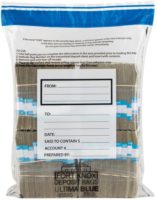Q: What factors must be considered for proper blown film extrusion?
A: Material compatibility is often an area that is overlooked in blown film coextrusion. Each resin is selected based on the final properties desired for particular applications. However, their compatibility with adjacent resins can be over looked.
Coextrusion dies are set pieces of hardware, whereas the materials they process are ever changing and evolving. Die designs typically depend on an initial list of formulations mutually agreed upon with our customers.
Brampton encourages its customers to start considering viscosity matching with their resins to avoid interfacial issues in coextrusion when they decide to deviate. At Brampton Engineering, we continually work with major resin suppliers and our customers to achieve the desired film structure for present and future film requirements.
Q: What kinds of trends/technologies is the blown film extrusion equipment sector seeing?
A: Industry trends to replace rigid packaging, retail, medical, industrial, and agricultural with flexible formats.
Barrier film enhancements were largely enabled by advancement in extrusion equipment, that allowed lighter materials to be properly controlled, resulting in significant reductions in material. The weight of a candy bar wrapper has been reduced by 60 percent in 6 years. Cheese packaging has been reduced by 30 percent while maintaining oxygen and moister barrier properties.
Process optimization, using new equipment technology, new resin, and process innovation reduced shrink film by 50 percent.
Q: What are your customers requesting in terms of products or service? What’s new and exciting at the company?
A: As market trends develop and new packaging technologies emerge, Brampton customers introduce new products using new resins and structures. This can have an impact on the current operating parameters of their extrusion lines.
When this affects the coextrusion dies, Brampton Engineering offers Rheological analysis of the customers system. Customers can provide us with process data, resin, and their run conditions and we can evaluate the behavior of the polymer melt via computer simulation. From the analysis we can recommend changes in process and materials if required, i.e., potential changes to layer percentages.
When market or application changes exceed the operating limits of the extrusion line’s original capabilities, Brampton Engineering’s extensive retro-fit experience comes to the forefront. Retro-fitting can be a cost effective alternative to the purchase of a new Extrusion line.
At Brampton Engineering we’ve added to our die designs a new FlexStack SCD die. The FlexStack SCD die is available for 5- to 11-layer applications. It differs from our previous design in that the melt flow channels are now cut onto both sides of the die plates, previously they would only be cut on one side. In doing so we’ve reduced the height of the die by over 40 percent. Benefits of this design include reduced back pressure in the system which will lower the pressure that needs to be generated by the extruders. The reduced die height decreases the potential of interfacial instability in the coextrusion chambers.
Brampton Engineering
(905) 793-3000; www.be-ca.com




